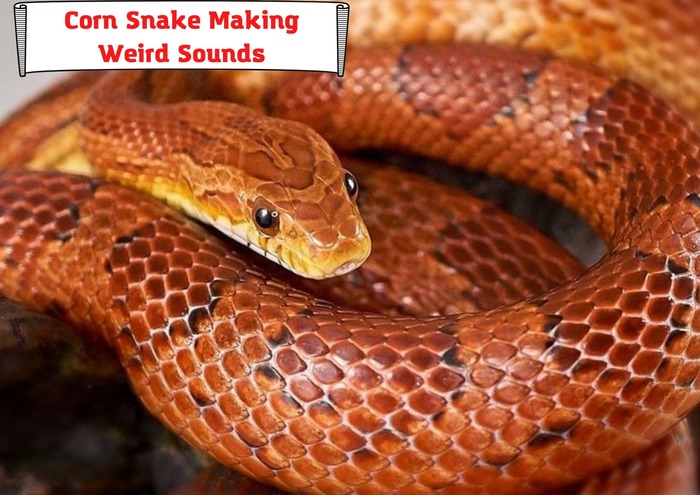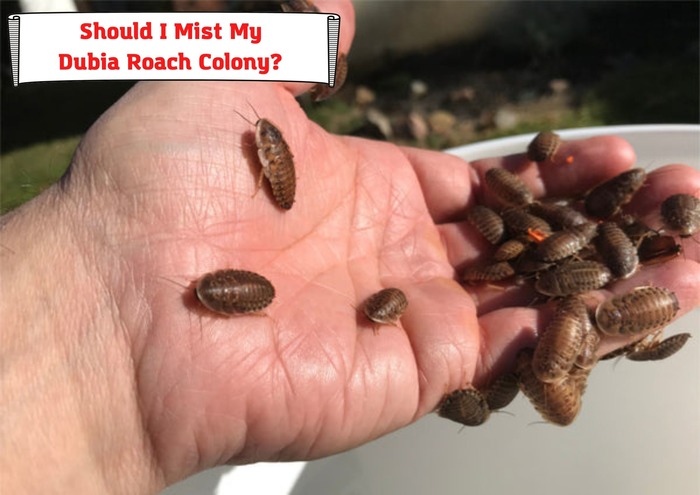It is wise to act fast if you are worried that your snake might suffer a mite infestation. Mites are dangerous to your snake because their biting causes itching, irritation, anemia, stress, and reduced immunity. Not to forget that mites are vectors that can transmit diseases to your poor snake.
A key part of the process that will rid your snake of a mite infestation includes figuring out how long the mites can live without a host. This article will answer this question and discuss everything you need to know about eliminating mites

We will highlight the following concerns:
- What are snake mites?
- How long snake mites can live without a host?
- What are the signs that your snake is battling a snake mite infestation?
- Are snake mites harmful?
- How to prevent a snake mite infestation
- How to treat a snake mite infection
What are Snake Mites?
Snake mites are parasitic arthropods that live on your snake’s skin and suck on its blood for sustenance. These tiny vampires (scientists call them Ophionyssus Natricis)prefer the areas around your snake’s mouth, eyes, on the side scales, and under the belly and chin. In their development stages, mites are drawn to your snake’s smell. Once they latch on, they will leach away your snake’s blood until they reach adulthood unless you do something about of course!
How Long Can Snake Mites Survive Without a Host
Eradicating a snake mite infestation takes quite a bit of effort. It is best to begin when you notice the snake mite infestation because every second wasted may cost your snake more precious blood. The first step involves quarantining your snake from its habitat. This will enable you to treat the snake and the habitat for snake mites.
It is crucial to ensure that any snake mites or eggs they left behind have been removed or are dead before reintroducing your healthy snake into the habitat. The only way to be sure of this (after cleaning and disinfecting the habitat) is to learn the snake mites’ life cycle. We have got you covered.
A snake mite’s life cycle is between sixteen and nineteen days from egg laying to natural death. Female mites that have reached adulthood lay a maximum of twenty eggs at a time and can lay four clutches before dying. We do not need to impress upon you that a single mite is all it takes to begin an infestation. When the eggs are laid, they hatch after three days and begin illicitly feasting on your snake two to three days after hatching.
If you starve the newly hatched snake mites of blood by removing your snake from the infested environment, it will die within six days. Without a host, all hatched eggs will die within a week. The mites that had already gotten a taste of your snake’s blood and matured to juvenile or adulthood stages only live for an additional two weeks.
These two weeks perpetuate the cycle as they get fat on your snake’s rich blood, lay eggs, and die for the next generation to carry to the torch. Removing your snake from the habitat should kill juvenile and adult mites within a week, but that is not saying much, as their clock was running out anyway.
Signs Your Snake is Suffering a Mite Infestation
You will notice the signs of a mite infestation in your snake sooner or later. These handy tips will make it sooner rather than later.
- Observe tiny stationary or mobile black specks on your snake’s mouth, eyes, chin, belly, or side scales. You may also notice the mites crawling on your hand after you handle the snake.
- Your snake may suddenly exhibit restlessness, aggressiveness, or increased activity, e.g., rubbing itself against objects in the terrarium to reduce the distress caused by the mite bites.
- Your snake soaks in the water bowl more often and for longer periods. This helps the snake reduce the discomfort caused by the mites and also drowns some of them. If you find dead mites floating in the water bowl, your snake sends a neon message urging you to save it from the tiny bloodsuckers.
- Skin discoloration or irritation manifests as reddened skin, raised scales, and darkened/discolored patches. Mites may be to blame if your snake does not look like itself.
- Your snake may shed its skin more often when suffering a mite infestation. If you have kept good records of your snake’s development, you will undoubtedly notice an increase in the frequency of skin shedding. The snake could also suffer a disruption in the shedding process that causes incomplete shedding or shed skin remaining stuck on it.
- Anemia inevitably sets in when a snake has suffered a severe mite infestation. Signs of anemia include pale skin, lethargy, and trouble breathing.
Are Snake Mites Harmful?
While snake mites pose no risk to humans, they will pester your snake and compromise its health. As the mites feed on your snake and continue reproducing, the colony will begin to drive your snake mad with itchiness. Eventually, the blood loss will make your snake too weak to rub the mites against objects in the habitat. As the anemia sets in, your snake will become lethargic and likely lose its appetite because the mites go on a feeding frenzy every time it eats.
Eventually, mites could result in your snake’s death due to severe blood loss and the infections that set in once the skin is broken and the immune system is compromised. Scientists also believe mites transmit diseases like IBD between snakes but have not yet delivered the smoking gun.
Where Do Snake Mites Come From?
Pet owners often pick up snake mites from other locations, e.g., a pet store, and inadvertently introduce them to their snake. Mites can cling to your clothes or purchases, e.g., a substrate, and remain dormant until they smell the snake’s blood and invade its enclosure.
Another likely origin of snake mites is introduced wild items, e.g., foreign caught prey or items like logs into the habitat. If not, you likely purchased a snake while it was already infested with mites, which spread the infestation to the enclosure and other snakes. Unlike bacteria, mites cannot spontaneously appear in a habitat because it is unhygienic; they must be introduced from an external source.
How to Treat Your Snake For Mites
Pet owners who notice that their snakes are suffering from snake mites are well advised to consult a reptile veterinarian as a matter of urgency. Having your snake examined by a professional is the best way to determine the severity of the infestation and how it has affected your snake.
If the snake mite infestation has not advanced, you can handle it at home by purchasing the commercially available treatments. Whichever product you purchase, follow the manufacturer’s instructions in the letter.
Instructions often involve spraying the enclosure to kill unhatched eggs and adult mites. Failure to follow the instructions could cause the treatment to fail and expose you and your snake to unsafe levels of the toxic pesticide used to kill the mites.
Pet owners who want to try and eliminate the infestation without relying on harmful pesticides can try a range of home measures. Be warned that trying these methods is as frustrating as a game of whack-a-mole that you and your snake will likely lose. These methods include covering your snake in olive or vegetable oil to suffocate the mites and bathing it regularly to drown them.
These methods have varying degrees of success because the mites do not lay their eggs on the snake but within the enclosure. Bathing and slathering your snake in oil does not deal with the unhatched eggs. Such methods can only slow down an infestation and are unlikely to eradicate it.
The most successful natural solution has been the introduction of predatory Hypoaspis Miles – a mite that feeds on snake mites without harming snakes. Once the mites have eaten the parasites, they will die from lack of a food source, and your snake will finally be rid of the pesky mites.
How to Prevent Snake Mites from Invading Your Snake’s Habitat
Snake mites are a rite of passage for most people who own reptiles like snakes and lizards. At one point or another, you will have to battle these parasites. The key is discovering the infestation as soon as it happens and preventing it from advancing.
Seasoned snake owners have, however, devised various methods that minimize the risk of exposing their snakes to mites. These include:
- Quarantining new snakes before introducing them into the habitat.
- Checking your snake’s mouth, eyes, chin, and belly for signs of mites
- Checking the water bowl for drowned mites
- Reducing the decor within the habitat and replacing the substrate with kitchen towels whenever you suspect an infestation. This will make the mites easier to spot and deprive them of warm moist areas to lay eggs.
- Whenever you contact a mite hotspot, e.g., a pet shop or another snake owner’s home, do not handle your snake without changing clothes and washing your hands.
- Inspect any substrate for mites before laying it in the habitat. If mites are present, you can destroy them by applying a pesticide, baking, or freezing the substrate.
Conclusion
Snake mites are not a big deal unless you ignore them. To avoid experiencing frequent snake mite infestation, stick to the guidelines above and have some commercial mite treatment products handy in an emergency.
- Pacman Frog Looks Deflated – What’s Wrong and What to Do? - August 7, 2023
- How to Put Snake Back in Cage after Feeding? Important Concerns - July 31, 2023
- Repta Boost: Instruction, Considerations, Ways to Use - July 24, 2023



